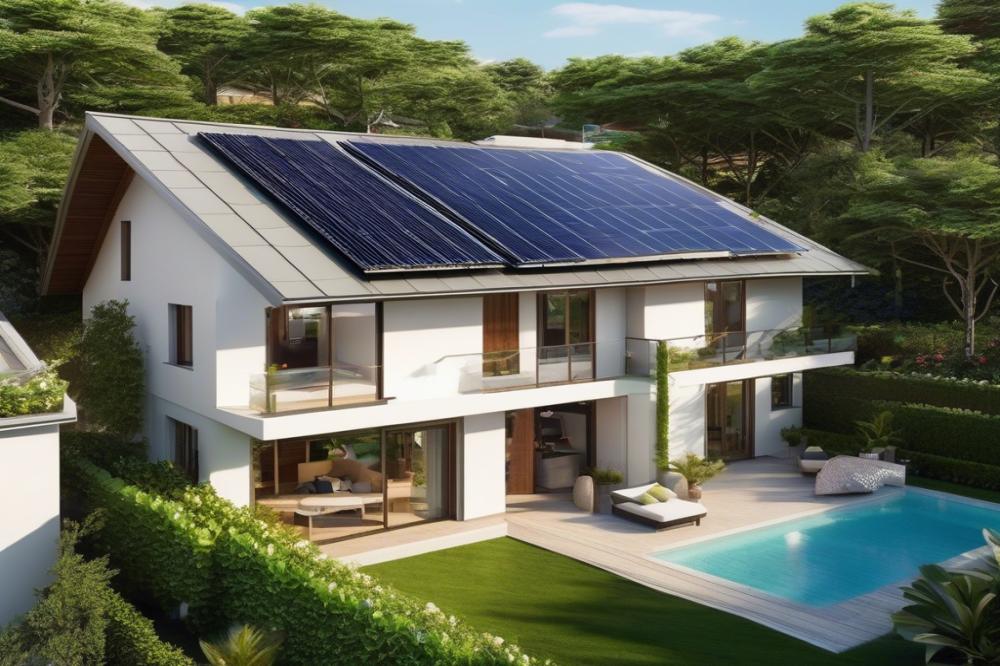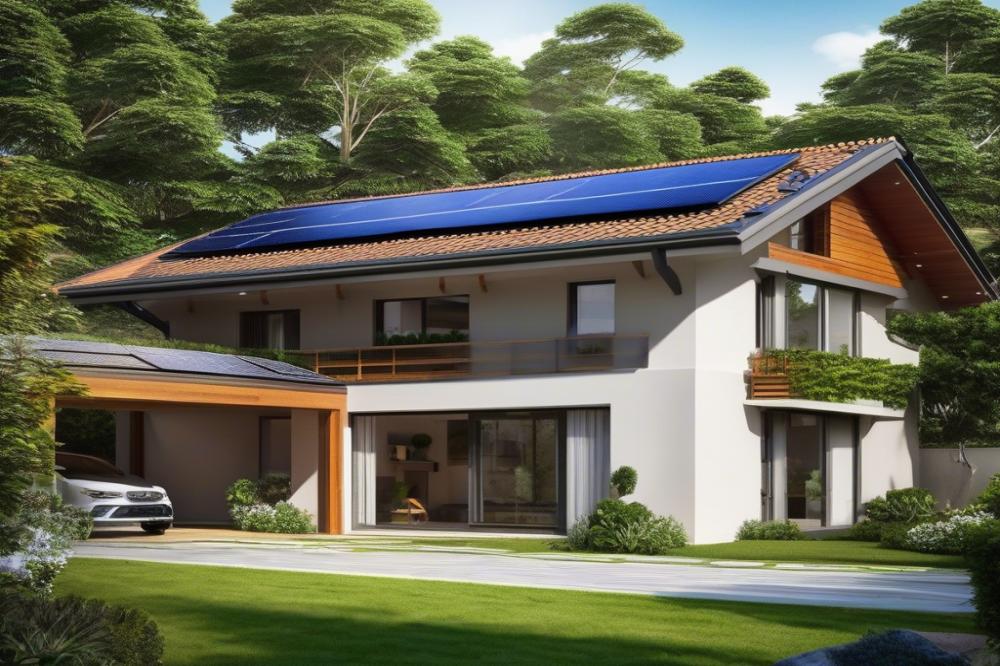Exploring the Market: Availability and Pricing of solar roof tiles Worldwide
solar roof tiles represent an exciting integration of home aesthetics and clean energy solutions. These innovative products not only provide shelter but also harness solar energy to generate electricity. By transforming the roof into a power source, they pave the way for energy efficiency in buildings. The shift toward sustainable building practices is gaining traction, as more people recognize the benefits of renewable energy in combating climate change.
As the world faces increasing environmental challenges, the adoption of solar technology is crucial. Many homeowners are looking to reduce their carbon footprints while enjoying potential savings on their energy bills. Green roofs and solar installations are becoming popular for their dual role in enhancing property value and supporting sustainability. Various solar products are now on offer, making it easier for individuals to adopt renewable energy solutions.
This article aims to explore the global market for solar roof tiles, delving into availability and market pricing across different regions. A cost comparison of these products can provide insights into how consumers might budget for such installations. Understanding the diverse options and prices can help homeowners make informed decisions about solar adoption in their own residential spaces.
The Rise of Solar Roof Tiles

Solar roof tiles are innovative materials designed for roof installation that harness solar energy. These products resemble traditional roofing materials, blending seamlessly into the home design. They’re not just aesthetically pleasing; they also provide significant advantages over conventional solar technology.
Energy efficiency is a major benefit of solar tiles. Their design allows for greater integration with the overall structure of a building compared to traditional panels. Homeowners no longer need to sacrifice style for sustainability. Each tile functions as a mini solar panel, converting sunlight into usable electricity.
When comparing solar tiles and traditional solar panels, differences are clear. Conventional panels often require additional mounting systems, which can affect roof aesthetics. On the other hand, tiles come in the form of roofing materials. Customers appreciate this integration as they focus on green roofs and sustainable building practices.
The market for these products has grown rapidly. Many consumers are seeking to reduce their carbon footprint. This trend is contributing to wider adoption of renewable energy. As more builders incorporate solar products, the industry steadily offers a wider selection to meet diverse needs.
Cost comparison often arises when discussing these technologies. Initial investment in solar products can be higher than traditional panels. However, long-term savings on energy bills often offset the upfront costs. Individuals consider this when deciding on their energy solutions.
Overall, the rise of solar roof tiles represents a significant step in the evolution of renewable energy. As global markets for sustainable options expand, more individuals and families are moving toward these innovative solutions. The preference for efficient, stylish energy solutions will likely continue to grow.
Global Market Overview

Regions Leading in Solar Roof Tile Innovation
The solar roof tile innovation is thriving in specific regions. Countries like the United States, Germany, and China are at the forefront. These areas have made significant investments in solar energy. Their advancements often set the standard for the global market. Additionally, nations in Europe are also pushing boundaries in sustainable building. This surge is partly due to a growing focus on energy efficiency. As technology improves, so does the appeal of green roofs.
Key Players in the Solar Roof Tile Market
Several companies dominate the solar roof tile market. Tesla is a notable name, promoting its energy products with high visibility. Their solar tiles combine aesthetics with functionality. Other manufacturers, like SunPower and CertainTeed, contribute significantly to product development. Each corporation brings its unique perspective and technologies. They help shape the options available for consumers everywhere. Price points and installation methods also vary widely among key players. This allows homeowners to explore various choices tailored to their needs.
Trends Influencing the Global Market for Solar Products
Multiple trends are currently impacting the growth of solar products. A rise in environmental awareness is pushing consumers towards renewable energy solutions. Government incentives also play a pivotal role in encouraging installation. The push for sustainable building materials influences both consumers and builders alike. As technology advances, the cost comparison of solar options becomes more favorable. Consequently, homeowners are looking more to invest in roof installation that adds value to their properties. Investors now see solar energy as a smart financial decision. This shift reveals a changing attitude towards energy consumption around the world.
Availability of Solar Roof Tiles
Regional Availability: North America, Europe, Asia-Pacific
In North America, solar roof tiles have gained popularity in recent years. Many homeowners are now considering renewable energy options. Companies like Tesla and CertainTeed offer these products. This trend is growing due to an increasing demand for energy efficiency. In Europe, various countries have embraced sustainable building practices. Nations such as Germany and the Netherlands focus heavily on solar technology. Asia-Pacific also shows a rising interest. Countries like China and Japan are significant players in the global market, manufacturing and installing solar products.
Supply Chain Considerations and Manufacturing
The supply chain for solar roof tiles is complex. Manufacturing often involves various materials, which can fluctuate in price. As a result, producers must carefully manage materials to maintain profit margins. Several manufacturers depend on suppliers who provide high-quality components. These partnerships are essential to ensure reliability and performance. However, changes in regulations can impact production timelines. Staying compliant with local and international laws is critical for manufacturers.
Challenges in Distribution and Access
Distribution of solar products faces numerous obstacles. Geographic distance can pose significant challenges. Remote locations may struggle with timely delivery of roof installation services. Additionally, local regulations can complicate access to solar energy solutions. The cost comparison with traditional energy sources may discourage potential buyers. Some regions may lack trained professionals for proper installation. These factors can limit the overall adoption of solar technology. As cities grow, the need for green roofs and efficient energy sources becomes more urgent. Addressing these challenges is vital for future progress in the market.
Pricing of Solar Roof Tiles
Cost Comparison with Traditional Roofing Materials and Solar Panels
Prices for solar roof tiles may seem high at first glance. Comparing them to traditional roofing materials gives a clearer picture. Asphalt shingles can cost around $100 to $150 per square. In contrast, solar products range from $500 to $1,500 per square depending on technology. Although the initial investment is larger, consider the long-term savings on energy bills. Many homeowners find that integrating solar technology helps reduce electricity costs. Thus, the overall value may offset the steep upfront costs.
Factors Affecting Pricing
Several variables influence the price of solar roof installations. Material choice plays a significant role. Tiles made from innovative materials tend to cost more but often provide better energy efficiency. Installation complexity is another important factor. A complicated roof design may require additional labor, increasing overall expenses. Additionally, geographical location affects pricing. Prices in urban areas may differ from those in rural locations. Local regulations and building codes can also impact costs, adding another layer to the pricing puzzle.
Financial Incentives and Subsidies
Many governments offer financial incentives that can decrease the overall cost of installing solar technology. Tax credits and rebates can help homeowners save substantial amounts. For instance, in some regions, homeowners might receive a rebate of up to 30%. This makes the expense of green roofs more manageable. Also, local incentives can vary widely based on state or city regulations. Exploring these opportunities is vital for anyone considering renewable energy options for their home. Understanding available subsidies can lead to significant savings, prompting more individuals to invest in sustainable building practices.
Impact on Energy Efficiency and Sustainable Building
How Solar Roof Tiles Enhance Energy Efficiency
A roof installed with solar products significantly boosts energy efficiency in homes and buildings. By harnessing solar energy, these installations convert sunlight into electricity. This process reduces the need for traditional energy sources, which often contribute to pollution. Electricity bills can drop as households produce some of their energy. Homeowners may find themselves reliant on electricity less, which means less strain on the grid.
Contributions to Green Roofs and Energy Savings
Integrating solar technology with green roofs offers a dual benefit. Green roofs provide insulation, keeping homes cooler in summer and warmer in winter. This natural insulation helps to lower energy consumption further. When combined with solar roof installations, the reduction in energy usage becomes even more pronounced. The combination also provides aesthetic value, creating beautiful spaces that promote biodiversity. Many homeowners appreciate this blend of beauty and function.
Case Studies Showcasing Successful Installations
Several case studies illustrate the benefits of these technologies. In California, a family installed solar tiles and integrated them with a green roof. Over the years, they reported a significant decrease in their energy bills. Meanwhile, they contributed positively to the environment. Another example comes from Germany, where a community adopted solar roof products for its sustainable building goals. The community’s shared energy system led to collective savings and increased awareness of renewable energy.
These stories highlight how innovative solutions can pave the way for a more sustainable future. The global market for these technologies continues to expand. As more people recognize the need for energy savings, the demand for solar technology increases. This shift toward renewables bridges the gap between comfort and sustainability, showcasing how thoughtful design can impact our lives positively.
Future of Solar Roof Tiles
Innovations in Solar Technology Relevant to Roof Tiles
New advancements in solar technology are becoming more relevant to roof installations. Thin-film solar cells are gaining attention. They are lighter and more flexible than traditional panels. These features can enhance the aesthetics of homes while improving energy efficiency. Additionally, integrated solar products are hitting the market. These products blend functionality with design, making solar energy more appealing.
Other innovations include energy storage solutions. Batteries that can store excess energy have become more efficient. Homeowners can use this stored energy during peak hours. This capability makes solar setups even more attractive. Smart technology is revolutionizing how we manage energy use as well. Integrated systems allow users to monitor their solar energy production in real-time.
Predictions for Market Growth and Pricing Trends
Experts project significant market growth for solar technologies. Demand for renewable energy sources is on the rise globally. Pricing trends for solar roof tiles will also evolve. Initial costs may remain high, but adoption rates will likely drive prices down. A growing number of consumers are interested in cost comparisons. They want the most effective options for their sustainability goals.
Investment in solar energy continues to grow, leading to increased competition. More manufacturers will enter the global market, providing greater choices. With this influx, prices could become more competitive over the next decade. As technology improves, efficiency will also increase. This phenomenon will create a positive feedback loop for adoption rates.
The Role of Solar Roof Tiles in Achieving Global Renewable Energy Goals
Solar energy plays a crucial role in meeting global renewable energy targets. Roof installations offer a viable way for homeowners to contribute. Sustainable building practices promote a greener future. Solar roof tiles can transform the way we think about energy use in homes.
Governments worldwide are encouraging the use of solar technology. Incentives and rebates support individuals making the switch. These efforts are integral to achieving emissions reduction goals. Solar roof tiles fit into urban environments, promoting green roofs and enhancing city landscapes. Energy independence is more achievable with widespread solar adoption. Increased awareness of climate issues further supports this transition.
Achieving renewable energy objectives requires cooperation from all sectors. Innovation in solar technology and the commitment of consumers pave the way toward a greener planet.
Final Thoughts on Solar Roof Technology
Availability and pricing of solar roof tiles vary greatly across different regions. In some countries, these products are easily accessible and competitively priced. Other places face challenges like higher costs or limited supply. The wide range in pricing reflects various factors such as local regulations and material availability. Homeowners may find that while the upfront investment is significant, long-term savings can be substantial.
These innovative roofing options play a crucial role in the shift toward sustainable energy solutions. By harnessing solar energy, households can reduce their reliance on traditional electricity sources. As more people adopt these technologies, the impact on reducing carbon footprints will grow. Renewable energy sources like solar contribute to a healthier environment for future generations.
Homeowners and builders alike should consider integrating this technology into their projects. Exploring the potential advantages can lead to not just energy savings but also enhance property value. Local governments often offer incentives that can make the transition easier. Therefore, individuals should investigate available options that meet their needs.
In conclusion, embracing solar roof systems could be a wise decision. Awareness of the market can guide thoughtful investments in our energy future. The time to act is now, and the benefits extend far beyond individual households. Together, we can support a sustainable future.



